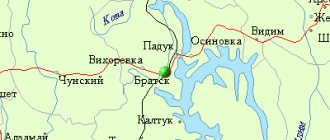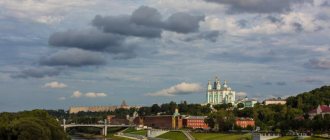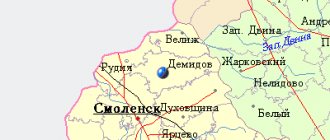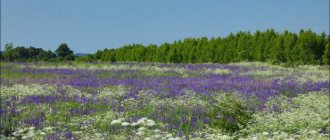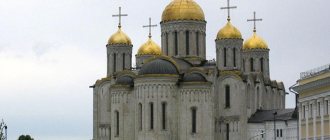City in Smolensk region, Russia
| Velizh Velizh | |
| City [1] | |
| In the center of Velizh | |
| Coat of arms | |
| Location of Velizh | |
| Velizh Location of Velizh Show map of Russia Velizh Velizh (Smolensk region) Show map of Smolensk region | |
| Coordinates: 55°36'N 31°11'E / 55.600°N Latitude 31.183°E / 55.600; 31.183 Coordinates: 55°36'N 31°11'E. / 55.600°N 31.183°E / 55.600; 31.183 | |
| A country | Russia |
| Federal subject | Smolensk region [1] |
| Administrative region | Velizh district [1] |
| urban village | Velizhskoe [1] |
| Based | 1536 |
| Region[1] | |
| • General | 226.62 km 2 (87.50 sq mi) |
| Height | 160 m (520 ft) |
| Population (2010 Census) [2] | |
| • General | 7 620 |
| • Evaluate (2018) [3] | 6 788 ( -10,9% ) |
| • Density | 34/km2 (87/sq mi) |
| Administrative status | |
| • Capital from | Velizh district [1], urban settlement Velizhskoye [1] |
| Municipal status | |
| • Municipal district | Velizh municipal district [4] |
| • Urban village | Urban settlement Velizhskoye [4] |
| • Capital from | Velizh municipal district [4], urban settlement Velizhskoye [5] |
| Timezone | UTC+3 (MSK[6]) |
| Postal code [7] | 216290, 216291 |
| OKTMO ID | 66603101001 |
Velizh
(Russian: Velizh, Belarusian: Velіж; Polish: Wieliż; Lithuanian: Veližas) is a city and the administrative center of Velizh District in Smolensk Oblast, Russia, located on the banks of the Western Dvina, 134 km (83 mi) from Smolensk, the administrative center of the region. Population: 7,620 (2010 census); [2] 8,343 (2002 Census) ; [8] 9,146 (1989 census). [9]
History[edit]
At the end of the 14th century it was a border fortress of the Grand Duchy of Lithuania. Muscovy recaptured it in 1536, but was returned to Lithuania in the 1582 Truce of Yam-Zapolsky. The city was returned to Russia under the terms of the First Partition of Poland. The houses of Nikolai Przhevalsky and Alexander Rodzianko in the immediate vicinity of Velizh are open to the public as museums.
After the First Partition of Poland in 1772, the territory was included in the newly created Pskov Governorate, a gigantic administrative unit comprising the present-day Pskov Oblast and a large part of Belarus. After 1773, the territory belonged to the Velizh district of the Pskov province. In 1777 it was transferred to the Polotsk governorship. In 1796, the governorship was abolished and the territory was transferred to the Belarusian Governorate; from 1802 to the Vitebsk province. In the period from July to October 1812, Velizh was occupied by Napoleon's army advancing on Moscow. In 1924, the Vitebsk province was abolished, and the Velizh district was transferred to the Pskov province. [10]
In April 1823, Velizh was the site of a notorious blood libel incident, when local Jews were wrongly accused of murdering a Christian boy found dead in a field. Based on the testimony of a drunken prostitute, more than forty Jews were arrested, and in 1826 the synagogues were closed. Some of the accused were not released until 1835. [11] [12]
On August 1, 1927, the provinces were abolished and the Velizh region was formed with its center in Velizh. It belonged to Velikiye Luk Okrug in Leningrad Oblast. On June 17, 1929, the Velizh region was transferred to the Western Region. On July 23, 1930, the districts were also abolished, and the districts were directly subordinated to the region. On September 17, 1937, the Western Region was abolished and the district was transferred to the Smolensk Region. [13] During the Great Patriotic War, from July 1941 to September 1943, the Velizh region was occupied by German troops. [10]
Much of the city was destroyed during World War II. During the war, Velizh was occupied by the German army from July 14, 1941 to September 20, 1943. In September 1942, German occupation forces killed all but 17 of the city's 1,440 Jewish residents. [14] [15]
On February 1, 1963, during the failed Khrushchev administrative reform, the Velizh district was merged with Demidov, but on January 12, 1965 it was recreated. [13]
Velizh is the one and only!
Quiet. It’s so quiet that the creaking of snow under your feet seems like heavenly thunder. Only the restless lanterns, lost in the gray morning fog, remind with their dim light of the bygone night. There are no people or cars on the streets, only a couple of stray dogs sit peacefully at the door of a small grocery store, patiently waiting for it to open, and at the local market near the bus station, several women lay out on the counters a simple “borscht set” interspersed with socks and mittens knitted from coarse wool ...
Velizh is an ancient Russian town, completely unlike any other. And it seems there is nothing special about it, but the even row of small, well-kept houses at the entrance, the restlessness of lonely passers-by and the centuries-old steep banks of the Western Dvina pull it out of the quagmire of the modern Russian outback, in which it is unknown how the surviving fragments of Russian antiquity coexist in places with the typical reinforced concrete slums of a defunct "Five-year plans" of socialist realism. It’s even difficult to say right away what makes Velizh one and only. But as soon as you get here, you immediately remember Pushkin’s lines: “Here is the Russian spirit, here it smells like Russia...” - and you believe that the centuries-old history of this primordially Slavic place on earth will continue for a very long time.
Blood oozed from the ground here
I visited this quiet, unremarkable Velizh street last spring. I couldn’t help but come here, I couldn’t help but honor the memory and wish the Kingdom of Heaven to the souls of people who, in this very place where I stood then and this time, were burned alive, shot and finished off at point-blank range. Now here is a monument in the form of a stele, on which is imprinted a human hand reaching out of the ground. Yes, just a palm breaking through a small grave mound. Just... to the point of trembling, to the point of mental chills, to the loss of the sense of time... To the right, a little further away, stood a barn in which those who were laid to rest here were burned alive. And in the bed of a small clean stream, human bodies lay in bulk. Old people, women, children... All those who fell under the punishment of punitive forces and policemen... Although, in fact, this is just one of many places where the nation of the Third Reich showed its true face to the whole world.
That day we came here together - me and the sculptor Gennady Fedorovich Tsyganov
, who created this composition from design to the final touch. Yes, this is the creation of a local resident, a man who dedicated his entire creative life to Velizh. Gennady could have arranged his fate differently, stayed to live in Minsk, and enjoyed the capital’s benefits. Higher technical education and a prestigious job contributed to this. But…
— I came here in 1984, worked for a year as a designer in an organization in Minsk after graduating from the Polytechnic Institute. At the same time, for two years I painted propaganda materials in the design workshop, at that time three artists worked there.
But I felt that the auto-tractor topic was not my calling. I was drawn to brushes, clay, wood... In the end, I finally decided to study to become an artist. I chose the art and graphic department of the Vitebsk Pedagogical Institute. But the matter came down to a direction that could only be obtained by working at least a year at school.
This is how my short career as an art teacher began at the Pogorelskaya secondary school in the Velizh region, thanks to which I was allowed to take the exams.
I did quite successfully.
This hand, to which you and I have now arrived, is the place of execution of the Jewish population. About 8 thousand Jews were killed here. They burned it in a barn that stood a little further away. When they were digging a pit for the foundation of the stele, they found charred bones. The Velizhans themselves collected the bodies and buried them right in this place. So the monument stands on a real grave.
Why the palm? Somehow everything happened on a whim. It’s just that in one moment everything seemed exactly like that - a hand reaching from the grave to life... But at first the project was somewhat different,” says Gennady.
— And then you worked on military topics?
- Of course, I did a lot of things. Yes, you yourself saw the Alley of Memory of Heroes in the central park of Velizh with portraits of Velizh residents - Heroes of the Soviet Union. It was a whole epic! Just imagine, by September 25th, I don’t remember what year, they gave money for this alley. And I had a conversation in the office of the head of the administration on the topic: “Will you take it? But if you don’t have time..."
The fact is that the proposal was received in August, and literally a month and a half later, the Alley of Heroes was supposed to be ready to be handed over to the commission... I took it. Managed. This is my latest work, in which both architectural and sculptural parts are intertwined. As for the portrait resemblance, there is one, and this was noted even by the relatives of the heroes who were present at the opening of the alley.
But only I know what it cost! Believe it or not, it took me no more than an hour and a half to create each of the portraits in soft material. There were shields hung around the workshop, according to the number of heroes.
I walked between them, sculpted, added something, subtracted... Three days of working time for everything, and then I had to remove the plaster molds and take them to the foundry at the aircraft plant in Smolensk. There was no material, I had to organize the collection of aluminum myself so that I had something to cast from. I set up a non-ferrous metal collection point in the workshop. Attracted all the local homeless people who brought here old kettles, washbasins, pots, broken car crankcases and other rubbish. Even the receptionist was sitting here, formalizing all this. The entire alley is cast from this material. Thank God that the scrap metal will never be completely collected! And I can say that every job I did for the city had to be done in approximately the same emergency conditions.
- What happened besides this?
— Tombstone at the grave of 300 Soviet soldiers in the village of Gorodishche. This is behind Drakes, Zaozerye, we turn into Gorodishche - and behind the village in the cemetery there is this burial. In 1995, I made a memorial complex on Lidovaya Mountain, where 14 thousand soldiers are buried... The memorial sign of the Sertey archaeological complex is also my work. After that, I received an order for the Gnezdovo burial mounds. I made a memorial sign for this protected place, installed exactly where an ancient pot with the inscription “Goroushna” was found. Then vandals destroyed the old monument there. Yes and much more...
But I want to say that sculpture in my case is not a profession. I live on my own bread, I have a small carpentry shop. There I make gazebos for residents of the capital and the Moscow region. If I receive a hundred orders during the season, I can assume that I am providing for myself. I create the design of the gazebos myself, the execution is mine. This is how I live. Although I am from the Republic of Belarus, I already consider myself a native Velizhan.
And if I can do something else for this land, my city, then this will be the best reward for me...
Someone always needs an artist...
Just as “nature has no bad weather,” so there are no unnecessary artists. And it doesn’t matter whether they are in the capital or provincial... Belonging to the high society elite is not yet a sign of talent. It often happens that in a poor studio, among all the old utensils periodically used for educational still lifes, you suddenly come across canvases that become for you a portal to another world, to another reality, which is more honest and better than the one in which we live. Exactly so, because it was created not so much with a brush and paints, but rather with the soul of the artist, directed towards the light, who put on the canvas these strokes merged into a picture of the universe.
Does anyone in a small town, preoccupied with its everyday problems, need this? Of course, it is necessary, otherwise every day children would not crowd around the class in which Viktor Andreevich Marov teaches painting. And even if out of ten young talents one or two of his students eventually connect their lives with art, all those who sat at his easel will never turn into people indifferent to life.
— I really liked the saying that “art acts on consciousness like a lens on light radiation.” Very wisely said and always helps me when working with children. After all, even just acquaintance with beauty, and even more so the creation of this beauty, gives a child the opportunity to grow up as a cultured, interesting person,” Victor says thoughtfully, mechanically moving from place to place the objects of the still life displayed under the lights. It is clear that this conviction matured in him and became an immutable truth throughout his 23 years of working with children. And how many more of these years are there? God willing - more!
Classes, as always, will begin at four o'clock in the afternoon, but for now the art workshop is at our complete disposal.
— So, are you more of an artist or a teacher by vocation?
- Both, but I didn’t understand it right away. Before I found my passion in life, I had to try a lot of things.
He graduated from the Palekh Art School named after Gorky, a unique educational institution located in the village of Palekh, Ivanovo region. And I myself come from those places. My village, Upper Landeh, which now has a population of about one and a half thousand people, is located 45 kilometers from Palekh, in the southeast of the region, near the Landeh River and 85 km from the Shuya railway station.
Historical reference. The first documentary mention of the settlement dates back to 1621. According to the census books of 1678, half of the village was listed under the boyar Prince Yuri Alekseevich Dolgorukov, the other half - under Prince Yuri Ivanovich Pozharsky. There were several churches in Landech.
In the 19th - first quarter of the 20th century, the village was the center of the Verkhne-Landekhovo volost of the Gorokhovetsky district of the Vladimir province. In 1859 there were 147 households in the village, in 1905 - 68 households.
Since 1929, the village became the center of the Landekhovo district and the Verkhne-Landekhovo village council, in 1931 - 1946 it was part of the Pestyakovsky district, in 1946 - 1960 - the center of the Verkhnelandekhovo district, until 1983 - as part of the Pestyakovsky district.
By the decision of the Ivanovo Regional Executive Committee of September 9, 1985, the village of Verkhniy Landeh was classified as a workers' settlement with the same name. In 2022 the population was 1,618.
...I became acquainted with the school while still at school; we were taken there on excursions.
In addition, my friend, Sergei Velikanov, already studied there. Every summer I came and looked at his miniatures. He still works as an artist. At first I entered after the 8th grade, but did not pass the competition. Only 15 people were recruited; eight applicants applied for a place. I entered after the 10th grade, but classes began, and I was drafted into the army. And so he served, returned, and graduated in 1987 with honors.
“By that time, the collapse of the country had already begun. People were losing their jobs, and wages were being delayed more and more often. Was there still some kind of stability in Palekh at that time?
“Everything was the same as everywhere else.” I, an artist and master of lacquer miniatures, wanted, like other graduates of previous years, to remain working in the Palekh workshops. But production quickly fell apart along with the country; demand for products fell even in the United States, where most of it was sent. However, something didn’t work out there either. Therefore, our entire course was given free diplomas and we were sent “to the public.” True, then semi-underground private workshops began to be organized in Palekh, but I went to Kazakhstan, to visit my relatives. I got a job at a large chemical plant as a graphic designer in the aesthetics department. I was engaged in so-called industrial graphics. He developed labels for civilian products, and visual propaganda was still in demand for some time. For some time he worked as the chief artist of the plant. And in 1991, Russians, Ukrainians, and Germans, for obvious reasons, began to leave Kazakhstan.
Until this moment, my wife Irina and I went on vacation to Velizh several times to visit her grandmother. A beautiful place - forests, a river... When life in Kazakhstan became unbearable, we decided to move here, which we did in 1992. We arrived - the nature is magnificent, but there is no work in our specialty. There was nothing to do, I got a job in a parquet shop as a simple worker. They sawed dies for parquet and assembled them into panels with a certain pattern. There I mastered wood carving, fortunately, from time to time I came across a suitable material, mostly linden. I was already cutting simple panels normally. As a rule, I did this during lunch breaks or at home. Then the management of the enterprise changed, the workshop suddenly became unprofitable for some reason, and it was quickly closed. Again the question: where to go to work? I saw an advertisement in the local newspaper that they were recruiting for the police. He came, was accepted, and trained as a forensic technician. Then in Kaluga I trained as an expert, returned, and my position was cut. Moved to the patrol service.
But it wasn’t my thing, walking the streets and picking up drunks. But still, every cloud has a silver lining - the Velizh School of Art found a position as an art teacher, and they offered it to me. And I’ve been teaching children for 23 years now. Everything suits me - it’s interesting with the guys, they are so different... And then in Velizh school No. 2 they offered to teach children drawing. I agreed, and for 13 years now I haven’t been kicked out.
— Do you often write for yourself?
— Mostly in the open air with children. We go out into nature with our sketchbooks and work together. They complete school assignments, and I sketch sketches and sketches. Our nature is such that you can write it endlessly, and you will always find new subjects and compositions. I also work on military topics. Probably, a modern artist cannot live without it. Look how many people want to take away our historical memory, rewrite our history in their own way, and deprive people of pride in their country. If they succeed, then who will we be? An uncomplaining herd that can be controlled without even coming to Russia? No, our people have never been like that and never will be.
He's right, Viktor Andreevich. We will not become “Ivans who do not remember kinship.” Moreover, we have something to be proud of and there are people like Gennady Tsyganov and Viktor Marov who will always remind us that “man does not live by bread alone.” And they will not only remind, but also teach our children to understand, appreciate and create beauty where they will have to live.
Photo by the author.
Economics [edit]
Industry[edit]
In 2013, 35% of the industrial output of the Velizh region was produced by textile industry enterprises, 17% by timber, 10% by food industry. Most of these enterprises are located in Velizh. [16]
Transport[edit]
Paved roads connect Velizh with Smolensk, Nevel via Usvyaty and Vitebsk. There are also local roads with bus traffic coming from Velizh.
The nearest railway station is in Rudna, on the railway connecting Smolensk with Vitebsk.
Links[edit]
Notes[edit]
- ^ abcdefghi Resolution No. 261
- ^ a b Federal State Statistics Service (2011). All-Russian Population Census 2010. Volume 1 [All-Russian Population Census 2010, vol. 1]. All-Russian Population Census 2010 [All-Russian Population Census 2010] (in Russian). Federal State Statistics Service.
- "26. The size of the permanent population of the Russian Federation by municipalities as of January 1, 2022". Federal State Statistics Service. Retrieved January 23, 2022.
- ^ abcd Law No. 88-z
- Federal State Statistics Service. Federal Agency for Technological Regulation and Metrology. No. OK 033-2013 January 1, 2014 “All-Russian classifier of municipal territories. Code 66 603 101.” (Federal State Statistics Service. Federal Agency for Technological Regulation and Metrology. No. OK 033-2013 dated January 1, 2014. Russian classification of municipal territories. Code 66 603 101.
). - "On the Calculation of Time". Official Internet portal of legal information
. June 3, 2011. Retrieved January 19, 2022. - Post office. Information and computing center of OASU RPO. ( Post office
).
Search for postal service objects ( postal Search for objects
) (in Russian) - ↑
Federal State Statistics Service of Russia (May 21, 2004). The population of the Russian Federation, cities of the Russian Federation as part of federal districts, urban settlements, settlements, settlements, settlements is 3 thousand or more people. [Population of Russia, its federal districts , subjects of the Federation, districts, urban settlements, rural settlements - administrative centers and rural settlements with a population of more than 3000 people] (XLS). All-Russian Population Census of 2002 [All-Russian Population Census of 2002] (in Russian). - All-Union Population Census of 1989 Population of Union and Autonomous Republics, Autonomous Regions and Districts, Territories, Regions, Urban Settlements and Village District Centers [All-Union Population Census of 1989: Current Population of Union and Autonomous Republics, Autonomous Regions and Districts, Territories, Regions , districts, urban settlements and villages performing the functions of district administrative centers]. All-Union Population Census of 1989 [All-Union Population Census of 1989] (in Russian). Institute of Demography of the National Research University: Higher School of Economics [Institute of Demography of the National Research University: Higher School of Economics]. 1989 - via Demoscope Weekly
. - ^ a b Historical information (in Russian). Administration of Velizh region. Retrieved May 9, 2016.
- Jewish Virtual Library. Entrance to Velizh
- Avrutin, Evgeniy (2017). The Velizh case: blood libel in a Russian city
. Oxford: Oxford University Press. ISBN 9780190640521. - ^ ab Parfenov, Boris; Olga Khorenzhenkova. On the history of the formation of the Smolensk region (in Russian). Smolensk. Retrieved May 9, 2016.
- Jewish Telegraphic Agency. “Only seventeen Jews escaped the massacre carried out by the Nazis in the Russian city of Velizh.” September 9, 1942.
- https://yahadmap.org/#village/velizh-smolensk-russia.545
- Investment passport of the Velizh region (PDF) (in Russian). Administration of Velizh region. 2013. Retrieved April 28, 2016.
- Municipal budgetary cultural institution "Velizh Regional History Museum" (in Russian). Velizh Historical Museum. Retrieved May 9, 2016.
Sources [edit]
- Administration of the Smolensk region. Resolution No. 261 of April 30, 2008 “On approval of the registration of administrative-territorial units and territorial units of the Smolensk region,” as amended. Resolution No. 464 of June 27, 2014 “On amendments to the register of administrative-territorial units and territorial units of the Smolensk region.” Published: Database “Consultant-plus”. (Administration of the Smolensk region. Resolution No. 261 of April 30, 2008 “ On approval of the Register of administrative-territorial units and territorial units of the Smolensk region”
as amended by Resolution of June 27, 2014 No. 464 “
On amendments to the Register of administrative-territorial units of the Smolensk region"). Administrative-territorial units and territorial units of the Smolensk region
). - Smolensk Regional Duma. Law No. 88-z of December 2, 2004 “On granting the status of a municipal district to the municipal formation” Velizhsky district “of the Smolensk region, on establishing the boundaries of municipalities whose territories are part of it, and granting them temporary status,” as amended. Law No. 117-z of November 30, 2011 “On Amendments to the Regional Law” On granting the status of a municipal district to the municipal formation “Velizhsky District” of the Smolensk Region, on approving the boundaries of municipalities whose territories are part of it, and granting them the appropriate status "". Came into force on the date of official publication. Published: “Bulletin of the Smolensk Regional Duma and Administration of the Smolensk Region”, No. 12, part II, p. 359, December 5, 2004 (Smolensk Regional Duma. Law No. 88-z of December 2, 2004 “On assignment to a municipal entity” Velizhsky district "of the Smolensk region the status of a municipal district"
, "
On establishing the boundaries of municipalities that include the territory", "On assigning them the appropriate status"
as amended by the Law of November 30, 2011 No. 117-z "
On amendments to the regional law "On assigning the status of a municipal district to the municipal formation "Velizhsky district" of the Smolensk region "on the creation of a municipal formation. The boundaries of municipal formations, the territories of which are part of them, and on granting them the appropriate status
. " In force from the date of official publication. ).
Symbolism
“The basis of the coat of arms of the Vyazemsky urban settlement is taken from the historical coat of arms of the district city of Vyazma, Smolensk province, Supremely approved on October 10, 1780, the true description of which reads: “He owns the coat of arms of Smolensk, as the inheritance of the eldest, the tribe of these Princes, that is: in the silver field, black cannon on a gold carriage. and on the cannon there is a bird of paradise, with a difference from the Smolensk coat of arms in its position on the top of the blue title.”
The cannons in the coat of arms symbolize the heroic past of the Smolensk land, which more than once fought back against foreign invaders.
Bird of paradise (depicted without legs) - symbolizes revival after wars, the desire for happiness and higher ideals. In addition, it is believed that it warns of danger.
A title (tournament collar) is a “sign of a junior” in heraldry (it is understood that a similar coat of arms without a title belongs to a subject senior in rank, position, relationship). The use of such signs in city heraldry is a distinctive feature of the Russian tradition. In this case, the title indicates the significance of Vyazma in the history of the formation of the region as one of the family inheritances of the ancient Smolensk reign and the role of Vyazma as the cradle of the famous princely family in the history of Russia.
Silver is a symbol of purity, openness, divine wisdom, and reconciliation.
Green color symbolizes nature, fertility, hope.
Gold is a symbol of the highest value, greatness, generosity, wealth, sunshine.
Azure symbolizes lofty aspirations, honor, devotion, truth, virtue.
Black color symbolizes prudence, wisdom, modesty, honesty."
